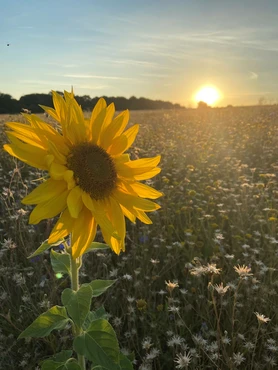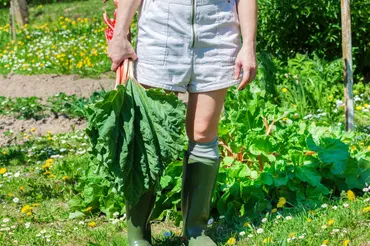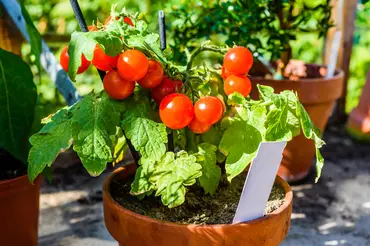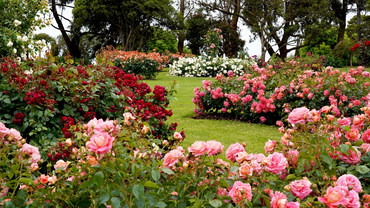
Transform your garden into a vibrant haven for pollinators and a feast for the senses with a wildflower meadow! While establishing a meadow may seem like a daunting task, fear not! With the right preparation, you can cultivate a beautiful and low-maintenance wildflower haven that will bring life and colour to your garden. This guide will walk you through everything you need to know to get started, from selecting the perfect seeds to caring for your flourishing meadow.
Seeding Your Meadow - Timing And Technique
Laying the foundation for your wildflower meadow starts with the seeds themselves. Here's what you need to know about timing, sowing techniques, and proper seedbed preparation:
Timing is crucial:
The success of your wildflower meadow hinges on when you sow the seeds. Ideally, aim for autumn (between August and October) or early spring (February to May). Autumn is generally preferred because there are fewer weeds present to compete with your wildflower seedlings.
Preparing the seedbed:
Before sowing, it's essential to prepare a clean and loose seedbed for optimal germination. This involves clearing the area of existing vegetation. The most effective way to achieve this is by lifting the turf, which exposes bare soil. To ensure the best results, do this a few months beforehand. This allows any weed seeds present in the top layer of soil to germinate and be removed before your wildflowers take root. Once cleared, break up the soil with a fork or tiller to create a fine, crumbly texture.
Sowing wisely:
Now it's time to introduce your wildflower seeds! The seeding rate depends on the type of seed mix you choose. Use 3 grams per square meter for pure wildflower seed mixes and 5 grams per square meter for mixes that include grass. To ensure even distribution, especially in larger areas, mix the seeds with dry sand. This creates a bulkier material that's easier to scatter evenly. After spreading the seeds, gently rake the soil to lightly cover them. Finally, firm the seeds into the soil by gently treading the area. This helps ensure good contact between the seeds and the soil, promoting successful germination.
Watching Your Meadow Flourish
The journey of your wildflower meadow has just begun! Here's what to expect as your seeds transform into a vibrant tapestry of blooms:
Patience is Key:
Germination takes time, so don't be discouraged if you don't see immediate results. Wildflower seeds have varying germination rates, and some may take weeks or even months to sprout.
Grasses first, flowers later:
It's perfectly normal for grasses to emerge before your wildflowers. These "nurse grasses" help suppress weeds and create a favourable microclimate for the developing wildflowers.
Blooming beauty:
Annual wildflower mixes will typically display colour in the first year, while perennials take a bit longer to establish themselves. The wait will be worth it, as perennials will return year after year, providing a long-lasting display.
Maintaining your meadow:
To keep your wildflower haven thriving, some simple late-season maintenance is key. In September or October, after flowering has finished, give your meadow a light trim with a strimmer. This removes spent flower heads and encourages new growth next year. Remember to remove any debris left behind by the strimming. Finally, mow the meadow to a height of about 15cm. This helps control vigorous grasses and prevents them from smothering the wildflowers.
Detailed Seed Sowing Guide
-
Clear the canvas:
Remove weeds and debris. If heavily weeded, allow weeds to germinate first, then remove them before sowing wildflowers. -
Low in nutrients is best:
Wildflowers prefer poor soil. Consider removing some topsoil if practical. -
Pick the perfect mix:
Choose a wildflower seed mixture suited to your soil conditions (consider drainage throughout the year). -
Sowing Seasons:
Sow between late March and late October, ideally in autumn. Avoid hot summer months. -
Seeding Rates:
Use 3g/m² for pure wildflower mixes and 5g/m² for wildflower with grass mixtures. Light aids germination for many species, so raking may not be necessary. -
Spreading Seeds Evenly:
Mix wildflower seeds with sand for better distribution, especially in large areas. - Germination Timeline:
Nurse grasses appear within a week, while wildflowers vary. Some may take weeks, others months. Annuals will flower in the first year if sown in spring or autumn. Perennials establish in the first year and flower in the second.
Additional Techniques
Planting wildflowers:
Transplant young wildflower plants into existing grassland to create a richer flora. Autumn or early spring with warm soil are ideal planting times.
Using bulbs:
Naturalise bulbs by planting them in suitable locations like shade for woodland bulbs or boggy areas for wetland plants. Plant bulbs in late summer or autumn when dormant.
New and Exciting Developments
We're thrilled to announce our new range of wildflower seed kits! These comprehensive kits provide everything you need to create your own wildflower haven.




